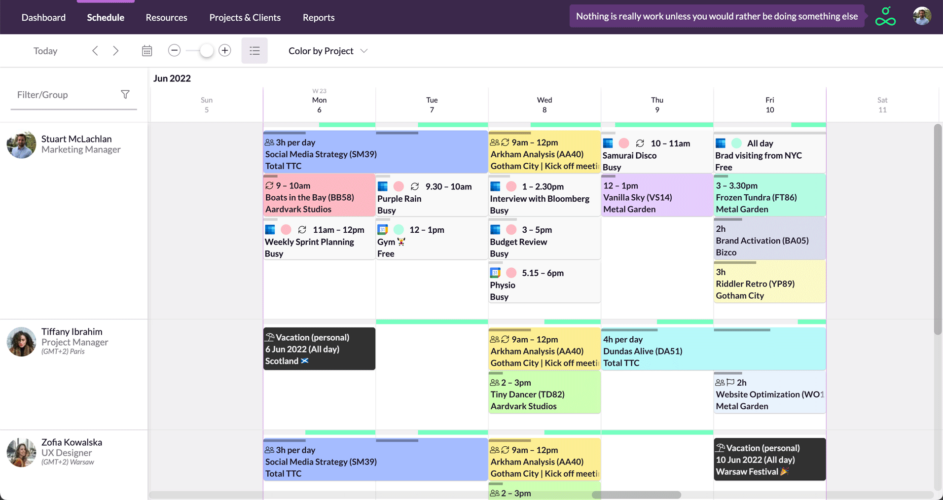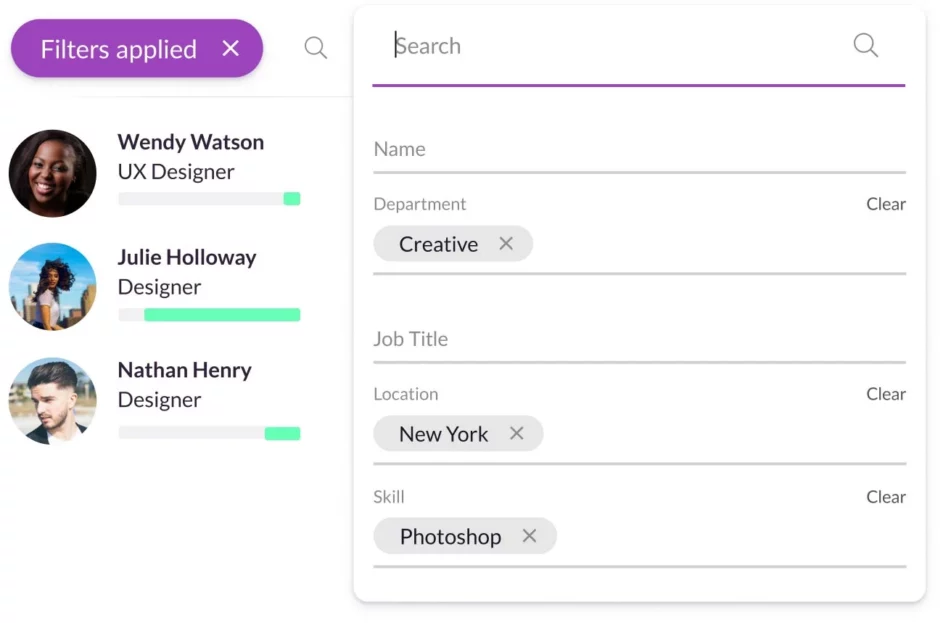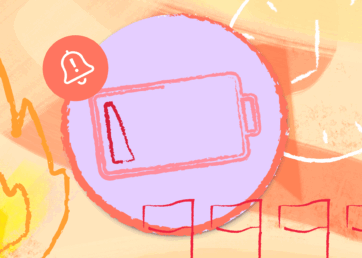When was the last time you were completely absorbed by a task? A time when you were so immersed in doing something, you forgot about the world around you?
This is called the “flow state.”
But as we’ve designed a world full of distractions, experiencing a flow state is a rare commodity these days.
So how can you eliminate distractions and set your day up for a flow state, and as a result, increase productivity and performance?
It’s all about protecting your time.
In this post, we’ll figure out exactly how you can do that, both individually and as a team.
But first, who discovered the “flow state?”
In this article 📖
The pursuit of happiness
Does the name Mihaly Csikszentmihalyi ring a bell? The former World War II prisoner became interested in philosophy as a result of the adversities he faced in life. He was particularly interested in what made people happy and content.
Having dabbled in philosophy after the war, he soon ventured into the field of psychology. After he attended a lecture by no one other than Carl Jung, Csikszentmihalyi decided to head to the United States to study psychology on his quest to find out what happiness really means to us humans.
An internal state of being
Csikszentmihalyi’s studies resulted in this discovery: happiness is an internal state of being. Documented in his popular book, Flow: The Psychology of Optimal Experience, he argues that happiness is not a rigid, unchanging state. It takes commitment and effort.
In his research, he found that levels of happiness shift. He eventually introduced the term “flow state.”
What is a flow state?
The flow state definition, in Csikszentmihalyi’s own words, is “a state in which people are so involved in an activity that nothing else seems to matter; the experience is so enjoyable that people will continue to do it even at great cost, for the sheer sake of doing it.”
In short: complete immersion and focus on an activity or task. Or, colloquially, known as being in the zone.
So how do you achieve a flow state of mind?
How does flow state happen?
According to Csikszentmihalyi, flow happens when people are able to apply and use their skills to solve a problem at hand. In other words, when you do something that presents a challenge but is still within your level of ability.
The result? We feel “a sense of well-being, a sense of mastery, and a heightened sense of self-esteem.”

The “flow channel:” The task is difficult enough to make us stretch, but not hard enough to break us. This is the sweet spot.
Flow researcher Steven Kotler gets into the science side of things. He explains that the reason we feel this way is because flow generates five key performance-enhancing brain chemicals.
Those five chemicals are:
- Norepinephrine
- Dopamine
- Anandamide
- Serotonin
- Endorphins
This happens to be a superb cocktail of chemicals that helps us ignore distractions, block pain, make connections between ideas and concepts, and just generally feel good.
Sounds amazing, doesn’t it? But let’s dig a bit deeper into the benefits.
5 benefits of being in a flow state
1. Increased productivity
One of the most obvious benefits of a flow state is increased productivity. When you’re in a flow state, you’re fully focused on the task at hand, and distractions are minimized. You’re not thinking about what’s coming next, or worrying about what happened earlier in the day. Instead, you’re fully present in the moment.
The result? Deep focus and flow.
2. Enhanced creativity
When you’re in a flow state, you’re not just working harder; you’re also working smarter. Your mind is open, and you’re free to explore new ideas and perspectives. This can lead to enhanced creativity and innovation, because you’re not limited by your usual ways of thinking. You can approach problems with fresh eyes, and often come up with new solutions that you wouldn’t have thought of otherwise. Yup, pretty neat stuff!
3. Improved performance
Another benefit of a flow state is improved performance. When you’re in a flow state, you’re fully engaged in the task at hand, and your skills and abilities are fully utilized. In short, you’re able to perform at your best (and sometimes even exceed your own expectations). For example, this can be useful in sports, where a flow state can lead to improved technique, speed, and accuracy.
But don’t worry, you don’t have to be a pro athlete to benefit from improved performance—this is true for any role.
4. Reduced stress
Flow states can also be beneficial for your mental health. When you’re in a flow state, you’re fully present in the moment, and you’re not worried about past or future events. This can be a great way to reduce stress, as you’re not dwelling on things that are out of your control. You’re focused on the task at hand, and this can be a form of meditation that allows you to find an inner calm.
Yes, we said it—work can be meditative!
5. Increased happiness
Last—but certainly not least—a flow state can lead to increased happiness. When you’re fully immersed in an activity that you enjoy, you’re experiencing a sense of fulfillment and accomplishment. This can lead to a boost in self-esteem and confidence, which can lead to a greater sense of overall happiness and well-being.
Okay, so the benefits are plenty. But how can you get into a flow state as a team?
Let’s take a look.
6 steps for getting into a flow state as a project team
How can you get into a flow state as a team, especially if you’re a remote team? It may not be easy, but it’s possible.
Below, we’ve listed out what’s necessary to get into that flow feeling.
1. Create a company culture that enables focus
Our workdays can be filled with distractions, whether it’s our calendars, inbox, or Slack channels. That’s why creating a company culture without distractions requires a deliberate and intentional effort.
The key? Setting boundaries. Set clear boundaries around work hours, communication channels, acceptable use of technology, as well as content being shared. This will help eliminate noise and reduce distractions.
Note: This has to be a top-down decision and senior executives have to lead by example.
2. Define clear goals and expectations
An essential part of any project is having clear goals and deliverables (this is why project scopes exist). Without them, there’s zero chance of focus.
But it’s not just about including goals in the project scope statement. The project owner or project manager has to communicate them effectively to the project team. That’s what will help team members focus their attention and energy on the most important aspects of the project, reduce distractions, and make it easier to get into a flow state.
Pro tip: When you do your workload planning, make sure to set specific goals and priorities for your team for the workday or workweek. This will ensure everyone’s clear on the deliverables or project milestones that need to be accomplished.
3. Break projects into manageable tasks
This is a no-brainer for any project manager. We all know that large projects can be overwhelming. That makes it difficult to focus and get into a flow state.
By breaking projects into smaller, more manageable tasks, team members can feel a sense of progress and accomplishment, keeping them more motivated and engaged in the work. Plus, smaller tasks make it easier to focus and prevent people from getting bogged down by the big picture.
Pro tip: Take some time each week to identify the tasks that are most important to complete. This will help your team stay focused and avoid getting sidetracked by less important tasks. Getting into a state of flow is all about prioritization.
4. Minimize distractions
Distractions can be the enemy of the flow state, so it’s essential to eliminate as many distractions as possible.
While it’s important that the company (and team) culture promotes a distraction-free environment, it’s also up to team members to minimize distractions in their day.
This might include:
- Setting up a quiet workspace
- Turning off notifications (on both your computer and mobile)
- Using noise-canceling headphones
- Establishing a clear schedule for communication and meetings
- Saying no or leaving meetings if they don’t have a clear purpose/value for you
Pro tip: Routines can be helpful in creating a sense of structure and predictability in your day. This can help you get into a flow state more easily since your brain will know what to expect. Start by setting a regular work schedule, including time for breaks and other activities, such as checking your emails. Stick to this routine as much as possible, and your brain will start to associate certain times of day with productivity. Flow state, here you come!
5. Create a comfortable work environment
The physical environment can also affect our ability to get into a flow state. Creating a comfortable and pleasant workspace can help team members feel more relaxed and focused, promoting a flow state. This can include factors such as lighting, temperature, and seating.
Pro tip: Whether it’s a specific location (like a favorite coworking space), room, or even smell (calling all diffuser lovers!), that helps you focus, make sure that’s where you spend the most time.
6. Foster a positive team dynamic
Team dynamics can also affect the ability to get into a flow state. Encouraging open communication, collaboration, and a positive attitude can help team members feel more motivated and engaged in the work, making it easier to get into a flow state.
Note: The project owner and project manager are responsible for fostering a positive team dynamic, but as team members, anyone can step up to the plate and take ownership of facilitating an open, collaborative, and positive team environment.
7. Allow for flexibility and autonomy
Providing team members with the flexibility and autonomy to approach their work in their own way can help them feel more in control and invested in the project. This can promote a sense of ownership and accountability, making it easier to get into a flow state.
Pro tip: As a project manager, ask each team member what they need to help them do their best job. Remember, good leaders ask questions, they don’t give orders.
8. Provide feedback and recognition
Finally, recognizing achievements and providing constructive feedback can help team members feel more invested in the project and motivated to do their best work. As a result, team members will feel valued and motivated, promoting a flow state.
Pro tip: As a project team lead, give positive (or simply constructive) feedback regularly. Do the same with recognition. Try to give positive feedback or helpful constructive pointers at the start of the week, and recognition at the end of the week. This will keep the levels of motivation high and increase the chances of team members getting into a flow state.
Sure, getting into a flow state can be challenging, and it’s easier for some than others. But it’s about creating the circumstances that will help everyone do their best work, and with that, help them get into a flow state more easily.
Flow state at work: 4 ways to foster flow with Resource Guru
With the right conditions, flow becomes easier. If you’re tired, in a rush, multitasking (by the way, there’s no such thing), or worrying about your to-do list, it’s hard to get into a flow state.
But you can set yourself, and your team, up for flow success with flow-optimized scheduling and resource management strategies.
Here are four Resource Guru-powered steps that will enable focused, deep work flow sessions.
1. Schedule your resources strategically
We’ve all got deadlines. But there’s a way to schedule your team’s time in a way that both fosters flow and keeps projects on track.
As we mentioned earlier, it’s about arranging the schedules so people can work when they feel the most productive.
Resource Guru’s resource scheduling feature gives you a bird’s-eye view of your team, their availability, and what projects they’re working on. Looking at the schedule you can:
- Book the right people with the right skills for the right projects
- Drag and drop bookings based on needs and timelines
- Use the color-coded bars to see who has capacity and who has space
To optimize the scheduling for a time when your team members are most productive, you can either:
- Ask your team members about their preferences upfront and schedule their time accordingly on their behalf
- Give your team members permission to make their own bookings based on project needs as well as their own preferred flow routine

Team schedule overview in Resource Guru, including events from Google Calendar and Microsoft Outlook.
2. Book people on projects that match their skill sets
We talked about how flow happens when people are able to “meet the challenges of their environment with appropriate skills.” In other words, when you do something that’s challenging enough, but manageable within your skill set.
In Resource Guru, you can find people with the right skills in a couple of clicks. By booking people with the right skill sets for your projects, you’re more likely to achieve project success, while your team is more likely to experience a flow state.
That’s what we call a win-win.
If you’re managing a large team or one with different specialties, it can be tricky to match the right team members to different parts of a project.
With Resource Guru you can filter between people to:
- Find people in specific roles
- Find people with specific skills
- Find people in specific locations

Filtering by skills in Resource Guru when planning team workloads. Find the right designer, engineer, copywriter—you name it.
3. Block off deep-work sessions with clear goals
Being in a flow state helps you to concentrate. But as we’ve learned, to get into flow in the first place, you need to limit distractions and have a clear challenge that fits your skill level.
As a project manager, it’s your job to protect your team’s time and help them get their tasks done on time. The best way to do this?
Block off deep work sessions in their schedules.

Do you have writers or other creatives that need that deep focus time to get into the flow? Book it off in their schedule on a daily or weekly basis, depending on project needs.
To help with focus, make sure you and your team have all the info and resources you and they need to do each task by including prep sessions in your weekly planning. When you reach a deep-work session, you can focus on the objective rather than rifling through your inbox for the latest version of the project brief.
Pro tip: Always limit both physical and digital distractions during your sessions. Turn off notifications and consider using the Pomodoro method (where you set a timer for 25 minutes of work followed by a 5-minute break). Where possible, let your co-workers (or household) know that you need to focus and ask them not to disturb you unless it’s an emergency.
4. Take time off and book downtime
R&R is essential for focus. Because if you’re overbooked or overworked, you won’t be able to achieve the initial level of focus that’s necessary to get into flow.
A Gallup study found that nearly three in four employees said they experience burnout. Gallup also described manager burnout as an “urgent problem”’—and it’s on the rise.
Research from 2022 found that while experiences of flow protect from burnout, being burnt out actually stops you from being able to get into a flow state. You want to avoid burnout at all costs.
Many people find that they’re only able to properly focus for 4 to 5 hours per day, so factor downtime and time off into your team planning. As well as not overloading your team, encouraging them to schedule PTO will help to protect against them burnout.
Sure, time off can be a headache for managers, especially if it’s unexpected. Resource Guru’s leave management feature will help you to avoid scheduling staff for tasks when they’ll be out of office. The staff holiday planner gives you high-level visibility into upcoming time off, so you don’t have to scramble to find coverage at the last minute.

“Me time:” You can’t focus if you’re overworked and tired. Schedule your R&R with Resource Guru.
Set your team up for success
As we know, there’s a set of conditions that lead to flow and it has several triggers. As a project manager, being aware of what team members need to do their best work is the first step toward helping them achieve a flow state.
Take scheduling seriously, take people and project fit seriously, and lastly—take rest seriously. Because when you set your team up for success, you set your projects up for success.
Do you want to set your team up for success? Try Resource Guru for free for 30 days and schedule your team for a flow state.





